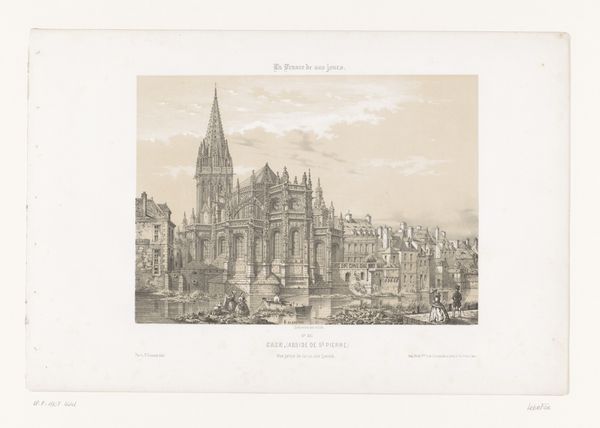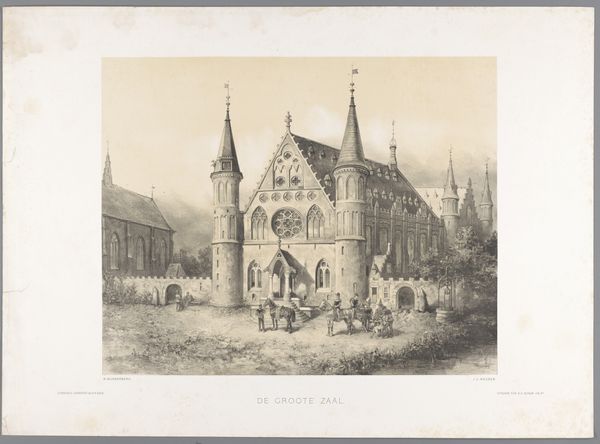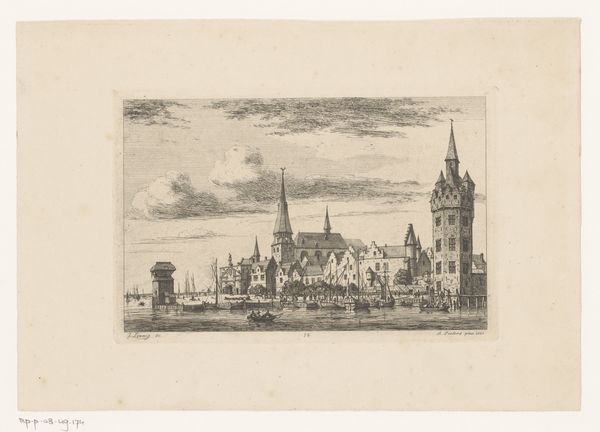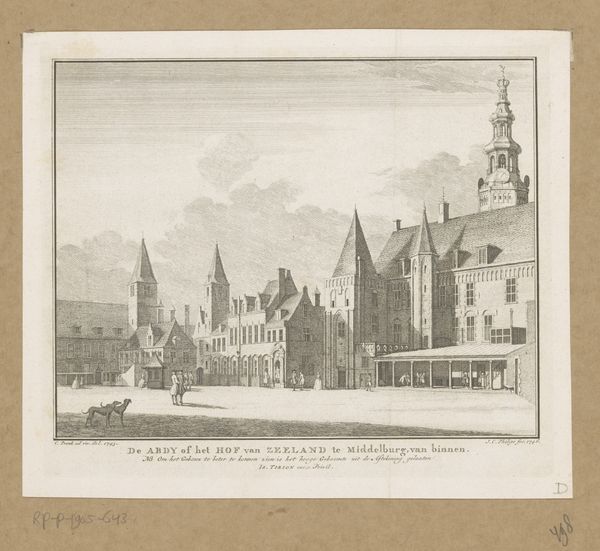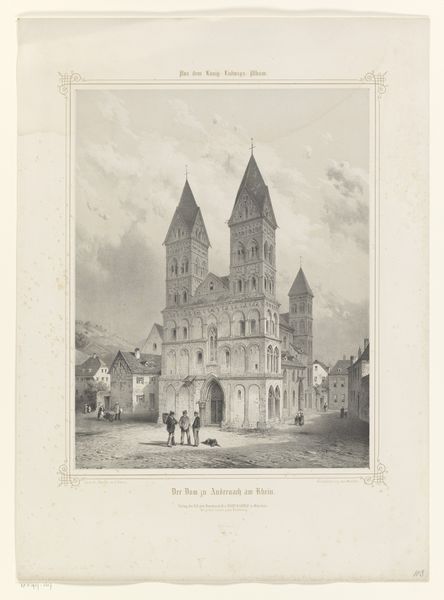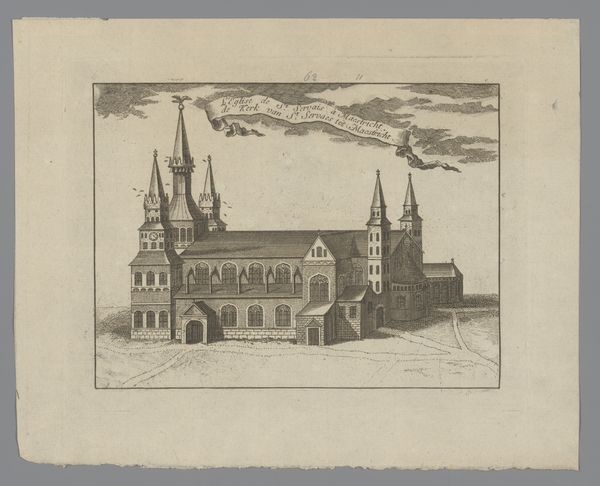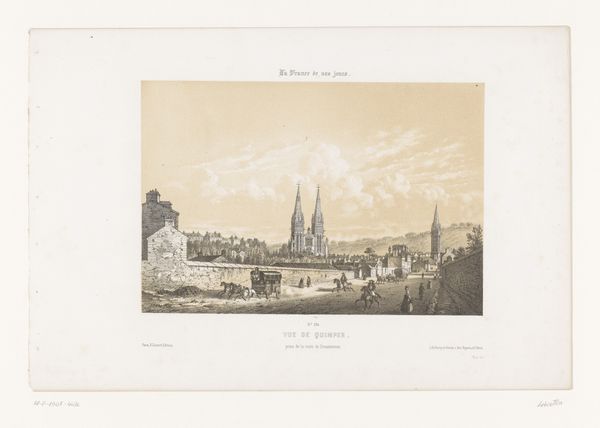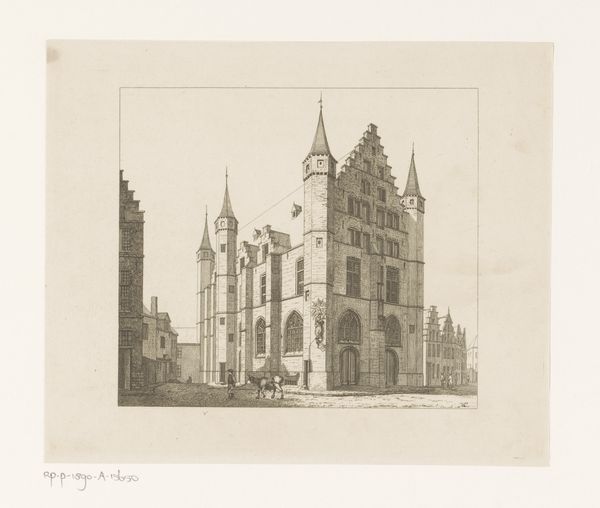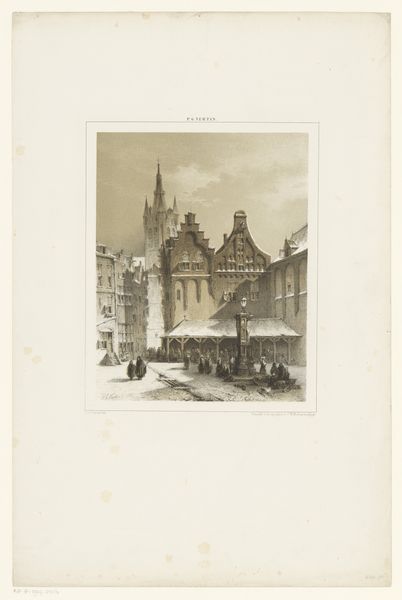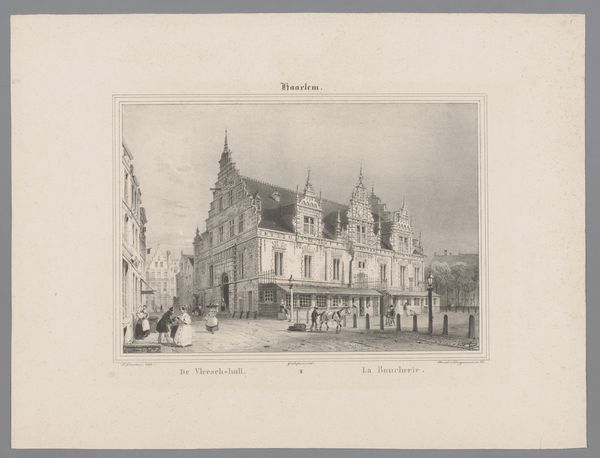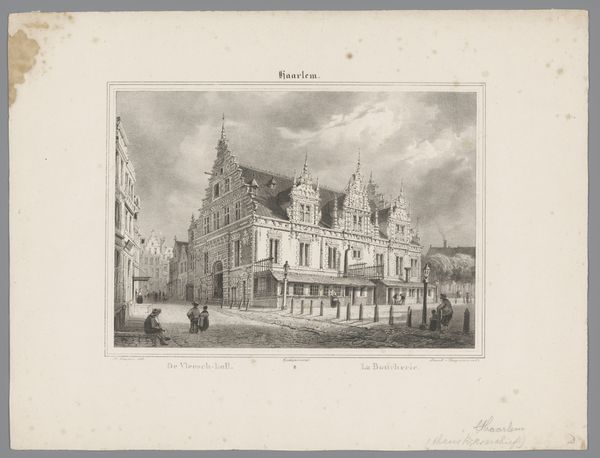
Dimensions: height 292 mm, width 434 mm
Copyright: Rijks Museum: Open Domain
Curator: This is "View of the Abbaye aux Hommes with the Église Saint-Étienne in Caen," created between 1855 and 1859 by Louis Lebreton. What’s your initial reaction? Editor: Austere, yet oddly vibrant. The sepia tones give it a historical distance, but the activity in the foreground brings a contemporary feel. Curator: It's an engraving, so the fine lines are crucial to its aesthetic. We need to consider printmaking's role in democratizing art. These engravings allowed wider access to imagery and, consequently, power dynamics of representation. Editor: Absolutely. Beyond aesthetics, the abbey and church shown represent historical power structures. Churches historically dominate spaces and psyches, reflecting institutional control over populations. How did Lebreton's life intersect with such realities, influencing his portrayal here? Curator: Well, it was made during a period of substantial social upheaval in France. It’s realism informed by Romantic ideals; look at the horse-drawn carriages – transportation facilitating trade and cultural exchange but also indicative of class stratification. Editor: Right, that division becomes stark when considering who benefits from this system. How did those connected to these monumental constructions - perhaps labourers and enslaved peoples from the French colonies - contribute to their production? What of the local communities affected? Curator: Lebreton highlights certain parts of life, omitting others. His materials—the printing press, ink, paper—facilitate an engagement with architecture, an architectural engagement inseparable from political and economic histories. Editor: True. Romanticism in its grandest manifestations served, quite often, powerful dominant groups. This image reflects but also reinforces their continued centrality. Who does an idyllic image such as this benefit? What narrative does it write that perhaps diminishes others? Curator: Understanding art as the outcome of concrete labor processes and decisions helps to reveal otherwise opaque hierarchies of artistic worth and what exactly the image's circulation makes possible. Editor: It's an invitation, perhaps, to ponder our place amidst that visual record, and challenge established artistic boundaries, demanding more nuanced reflections on society and culture in turn. Curator: Precisely. The image asks more from its viewers in light of critical reassessments.
Comments
No comments
Be the first to comment and join the conversation on the ultimate creative platform.
